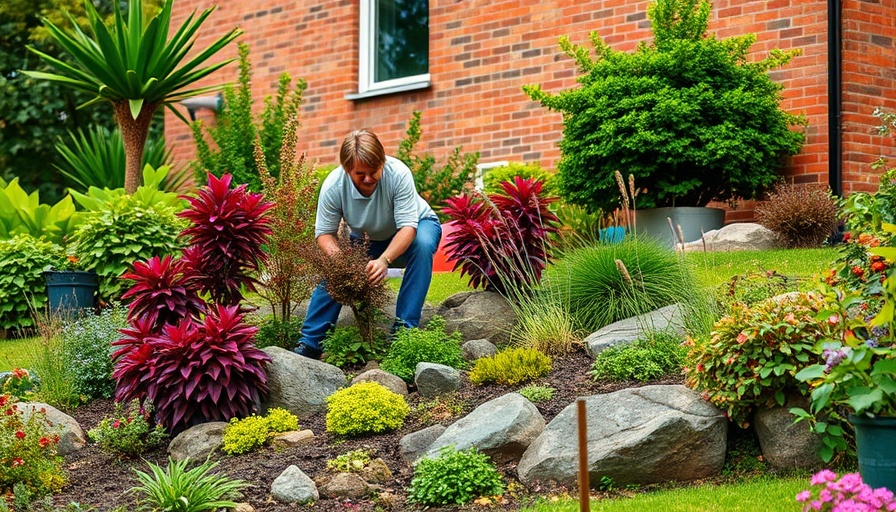
Transform Your Sloped Yard into a Stunning Garden
Is your sloped yard a source of frustration? Don’t let that uneven ground discourage you! Gardening on slopes presents a unique set of challenges, but it also opens up opportunities for creative design. With the right approach and materials, you can turn a dusty, weedy site into a vibrant, inviting landscape.
In Building Perfect Low-Maintenance Garden Into Sloped Yard, the discussion dives into innovative ideas for transforming sloped spaces, and we’re breaking down its key insights while adding our own perspective.
Natural Beauty with Sandstone Boulders
One of the most compelling solutions for sloped gardening is using large, natural sandstone boulders instead of traditional treated pine sleeper retaining walls. Not only do these stones provide the necessary structural support, but they also enhance the garden's aesthetic appeal. By allowing gravity to work for you, these boulders create a beautiful, natural look, minimizing the need for excessive maintenance.
To ensure stability, it’s crucial to place the boulders correctly. Use a crane for heavy stones to guarantee they are positioned precisely where you want them. Large gaps between the stones will facilitate proper drainage, allowing water to escape and prevent soil erosion. Plus, backfilling soil around the boulders will help them blend into the landscape, yielding a natural look that feels like it has been here for years.
Choosing the Right Plants for Your Sloping Garden
Once you have your boulders in place, it’s time for the fun part: planting! Start with larger trees, as they will define the structure of your garden area. Consider the varying sunlight conditions throughout the year, as this will influence your plant choices. For example, trees like Backhousia citriodora bring lemon-scented foliage, while Buckinghamia attracts beneficial wildlife.
As you layer the garden, incorporate a mix of native and exotic plants. Opt for hardy varieties such as Rhaphiolepis indica for a lush look and Doryanthes excelsa for dramatic height. For ground cover, consider native violets and Hibbertia, which will not only provide color but will keep the soil anchored in place.
The Importance of Mulching
When designing your sloped garden, remember that mulching is a key factor in maintaining soil health. Mulch helps retain moisture, slows down runoff, and gives your garden a polished look. By investing time in mulching, you're not just beautifying your garden, but also ensuring its longevity, particularly in the challenging conditions of a slope.
DIY Essentials for Small Spaces
If you're seeking budget-friendly solutions and quick projects, consider innovative ideas such as building a crate coffee table using available materials. Not only is this project fun, but it’s an excellent way to utilize small spaces for both gardening and entertaining. This DIY project will serve as a stylish addition to your outdoor areas whilst combining functionality with aesthetics. Plus, it encourages you to personalize your space without breaking the bank.
Conclusion: Your Dream Garden Awaits
If you’re frustrated with your sloping yard, now is the time for a transformation! By using natural boulders, choosing the right plants, and adding thoughtful touches like mulch and DIY projects, you can create a stunning low-maintenance garden. Why stick to conventional landscaping when you can cultivate a space that reflects your unique style and mining potential?
So, roll up your sleeves and get started—I promise it will be worth it! Let your garden be a source of joy and a fantastic escape in your very own yard.
 Add Row
Add Row  Add
Add 




Write A Comment